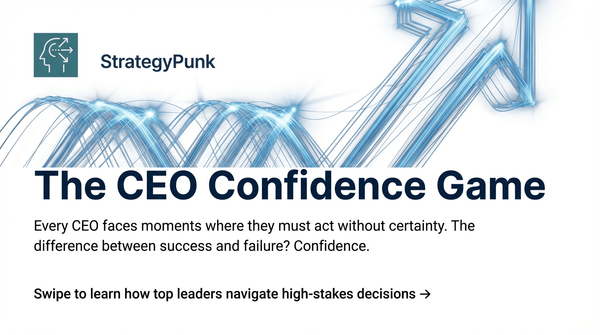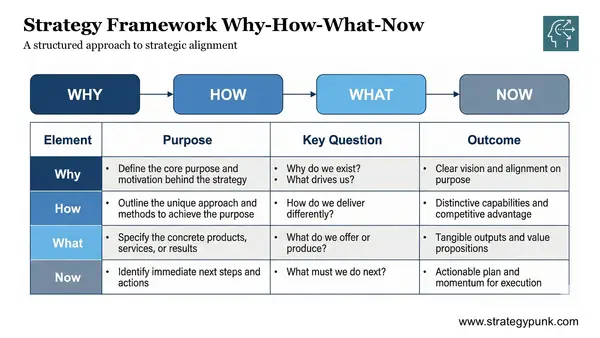Lead with Trust: 5 Actions That Inspire, Not Control (Free PDF Guide)
Stop controlling. Start trusting. Five practical actions to build engaged teams that solve problems without you. Download the free guide.
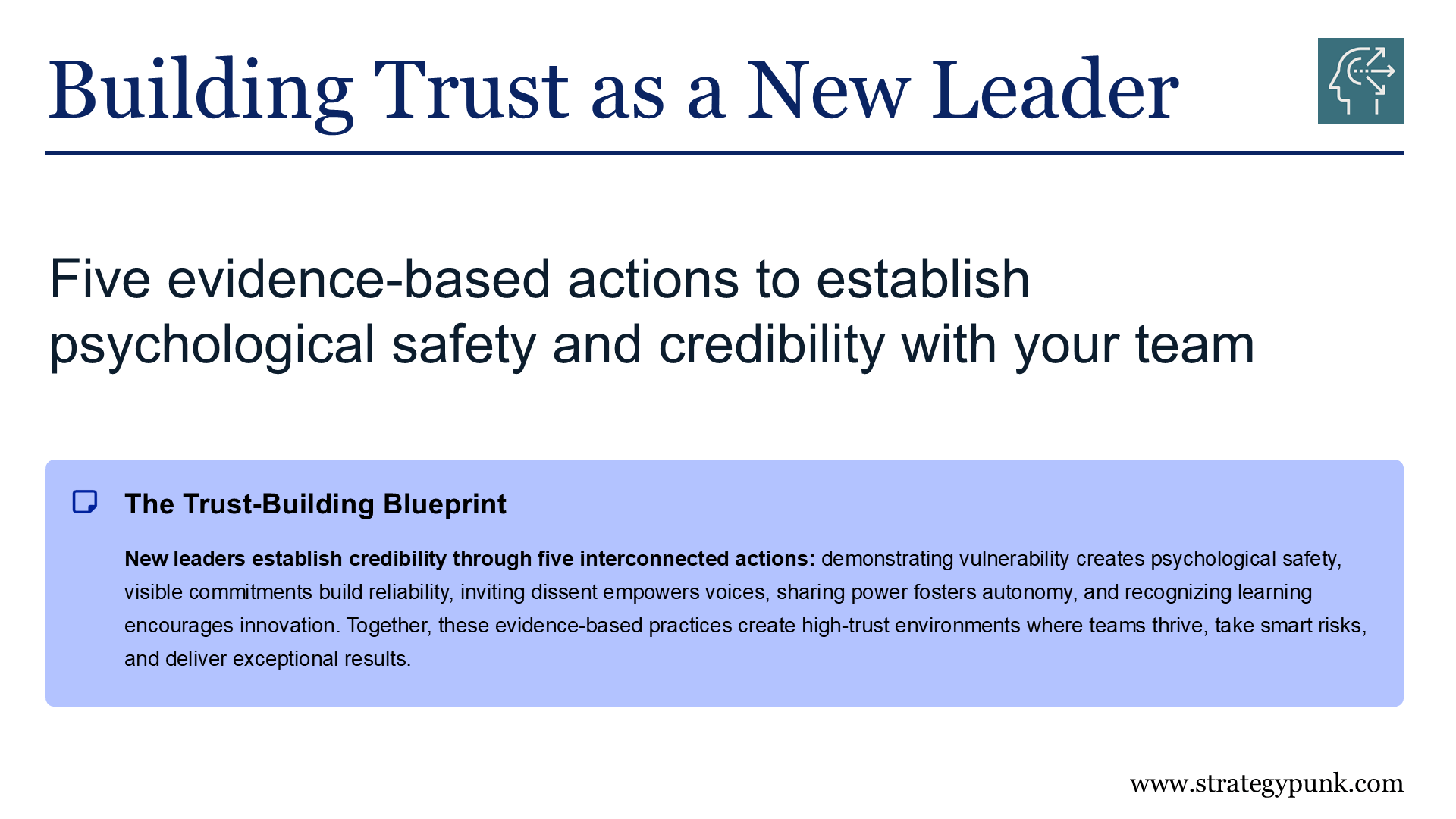
Trust takes time. These five actions speed up the process. Start with one. Practice it until it feels natural. Then add another. Your team will notice.
Summary
New leaders face a choice.
You can control your team, or you can trust them.
Control feels safe.
It allows you to monitor everything and resolve issues.
But control kills engagement.
Your team stops thinking.
They wait for instructions.
Trust does the opposite.
It builds teams that solve problems without your direct involvement.
Here are five actions that build trust from day one.
Show Vulnerability First to Model Psychological Safety
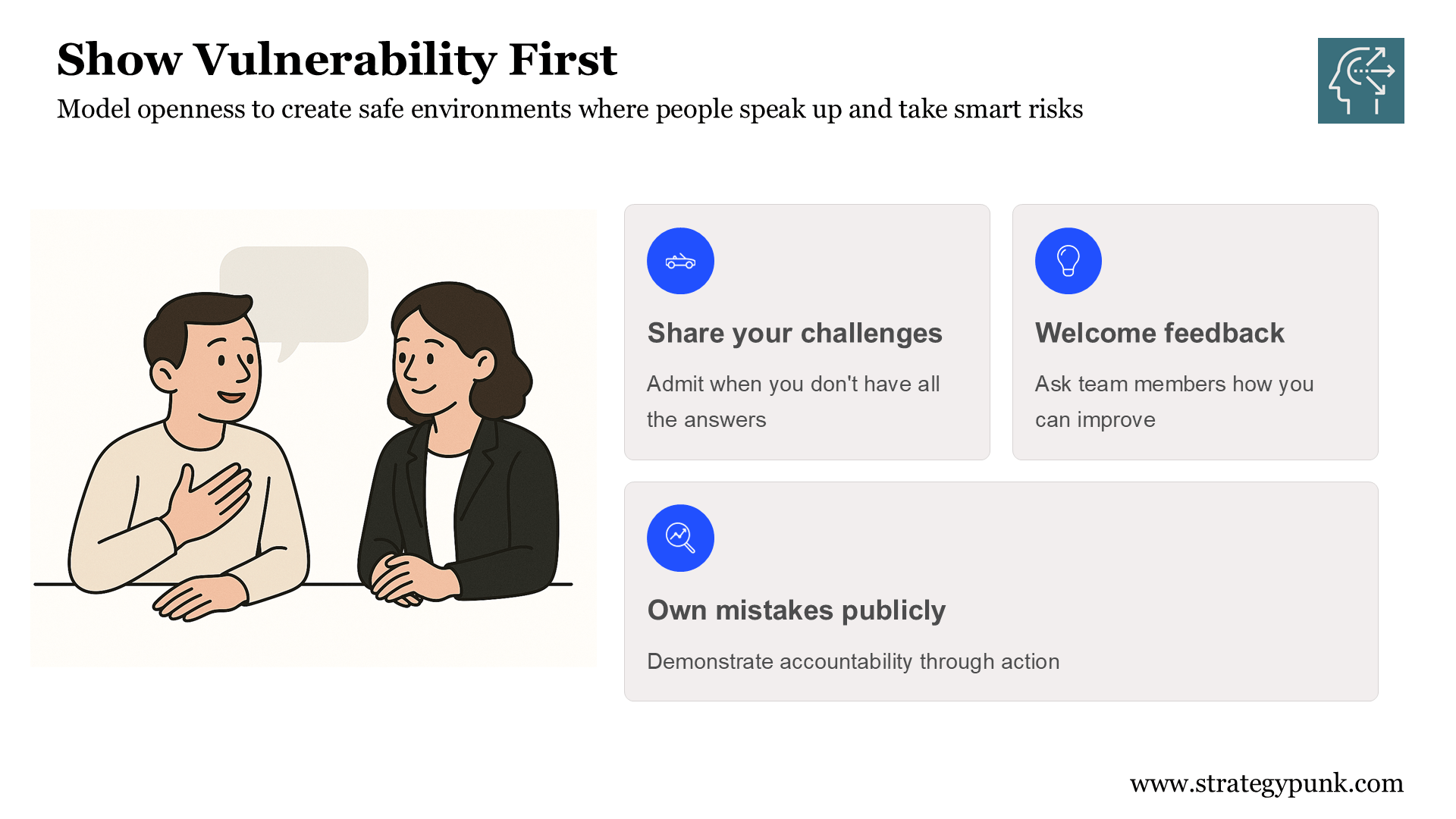
Your team watches you. When you admit mistakes, they learn it's safe to fail. When you say "I don't know," they feel free to ask questions. When you share what keeps you up at night, they open up about their concerns.
Start your next team meeting with something you're struggling with. Ask for input. This signals that perfection is not the standard. Growth is. Research indicates that leaders who model vulnerability foster environments where people are more likely to take risks and innovate.
Make Your Commitments Visible and Follow Through Reliably
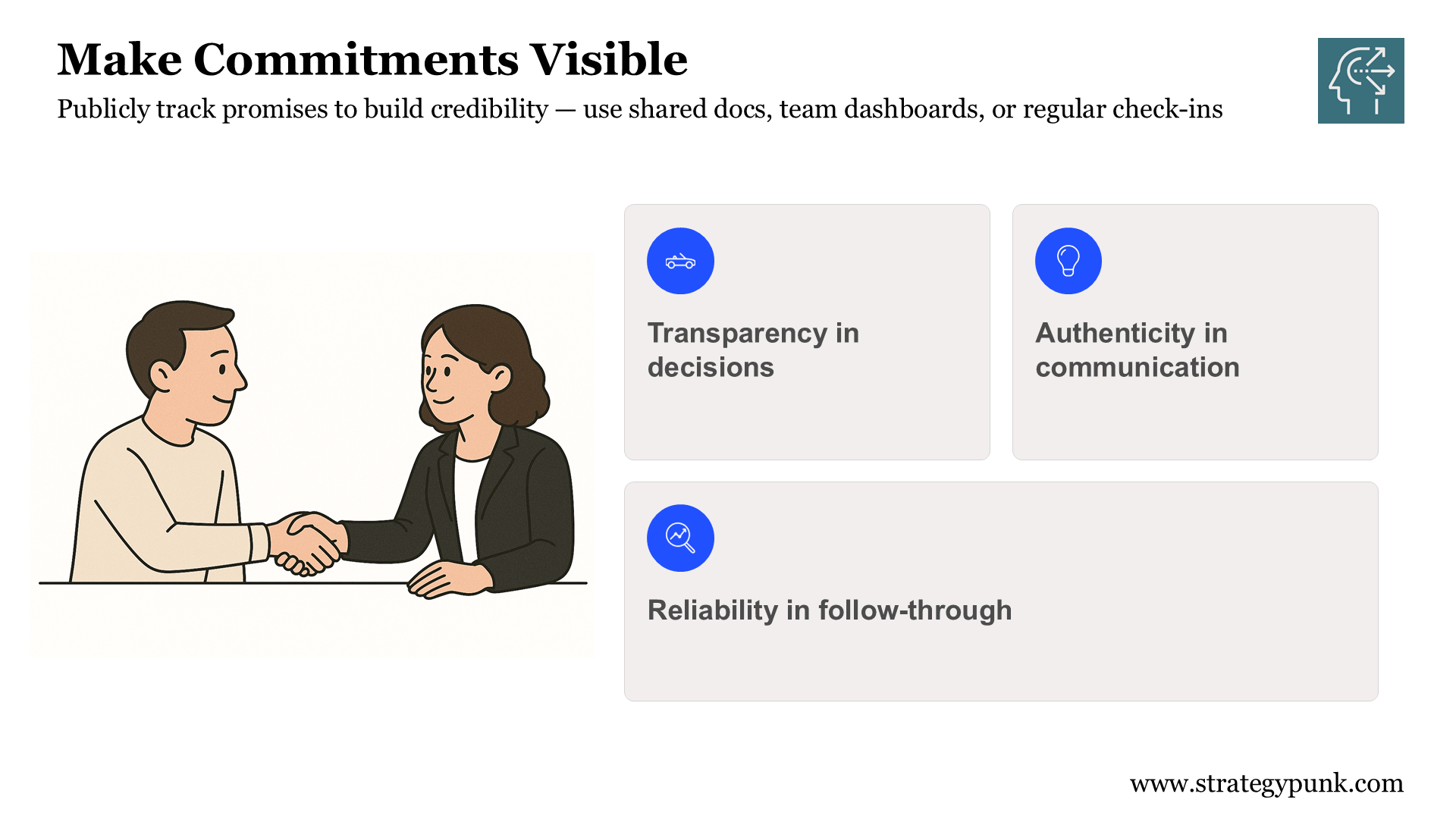
Write down what you promise. Share it with your team. Then do what you said you would do. This sounds simple. Most leaders fail at it.
Keep a public list of your commitments. Update it weekly. When you can't deliver, explain why before the deadline passes. Your team needs to see that you're accountable to the same standards you set for them. Reliability builds credibility faster than any speech about trust.
Actively Invite Dissenting Views and Reward Constructive Pushback
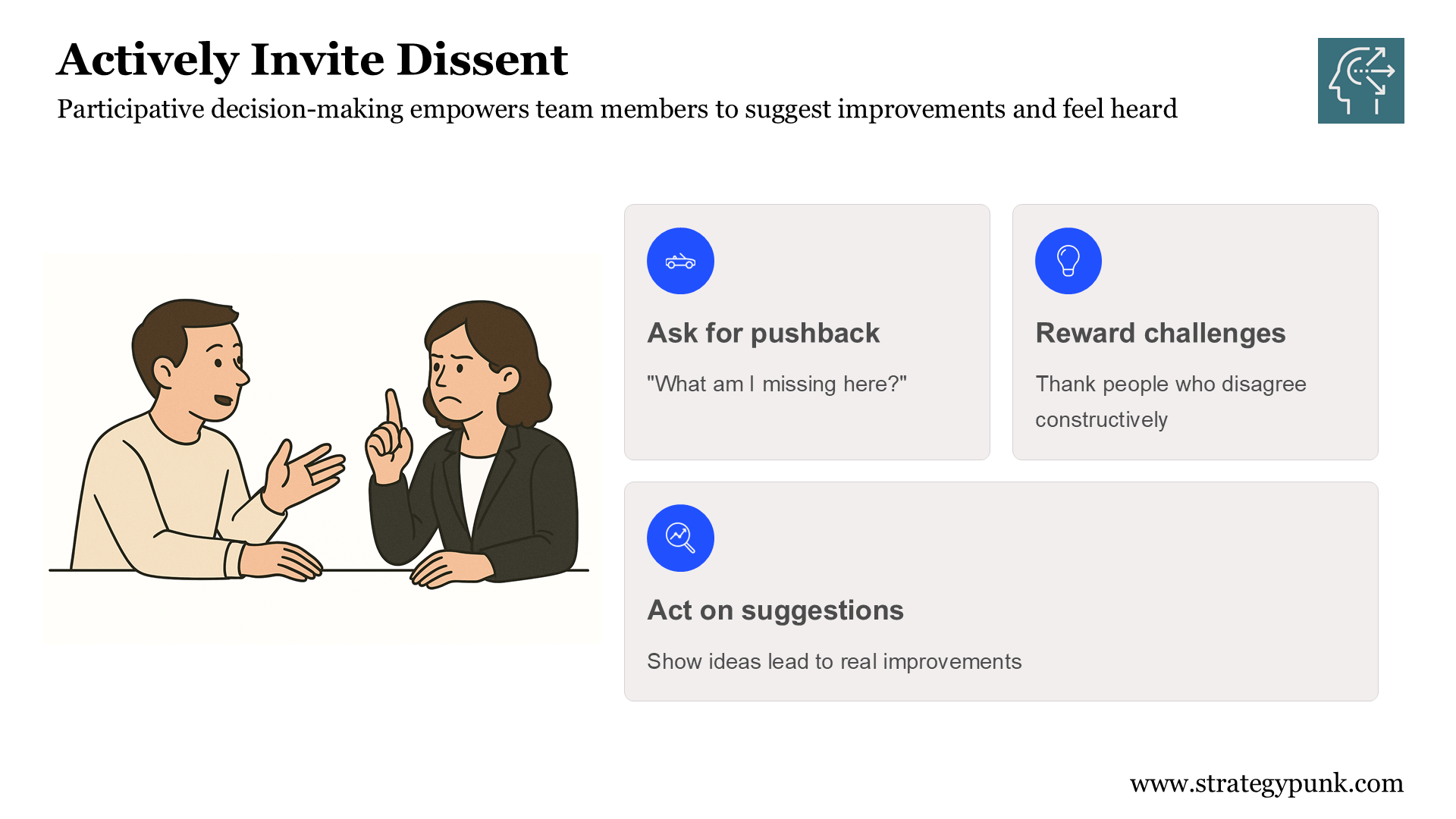
Ask your team to find holes in your ideas. Make it safe to disagree. When someone challenges your plan, thank them publicly. Give them credit for improving the outcome.
Try this in your next decision meeting. Present your idea, then say "What am I missing?" and wait. Let the silence sit. Someone will speak. When they do, engage with their concern. Show them that pushback makes the work better. Teams that challenge ideas outperform teams that nod along.
Share Decision Power Early by Giving Autonomy Before It's Asked For
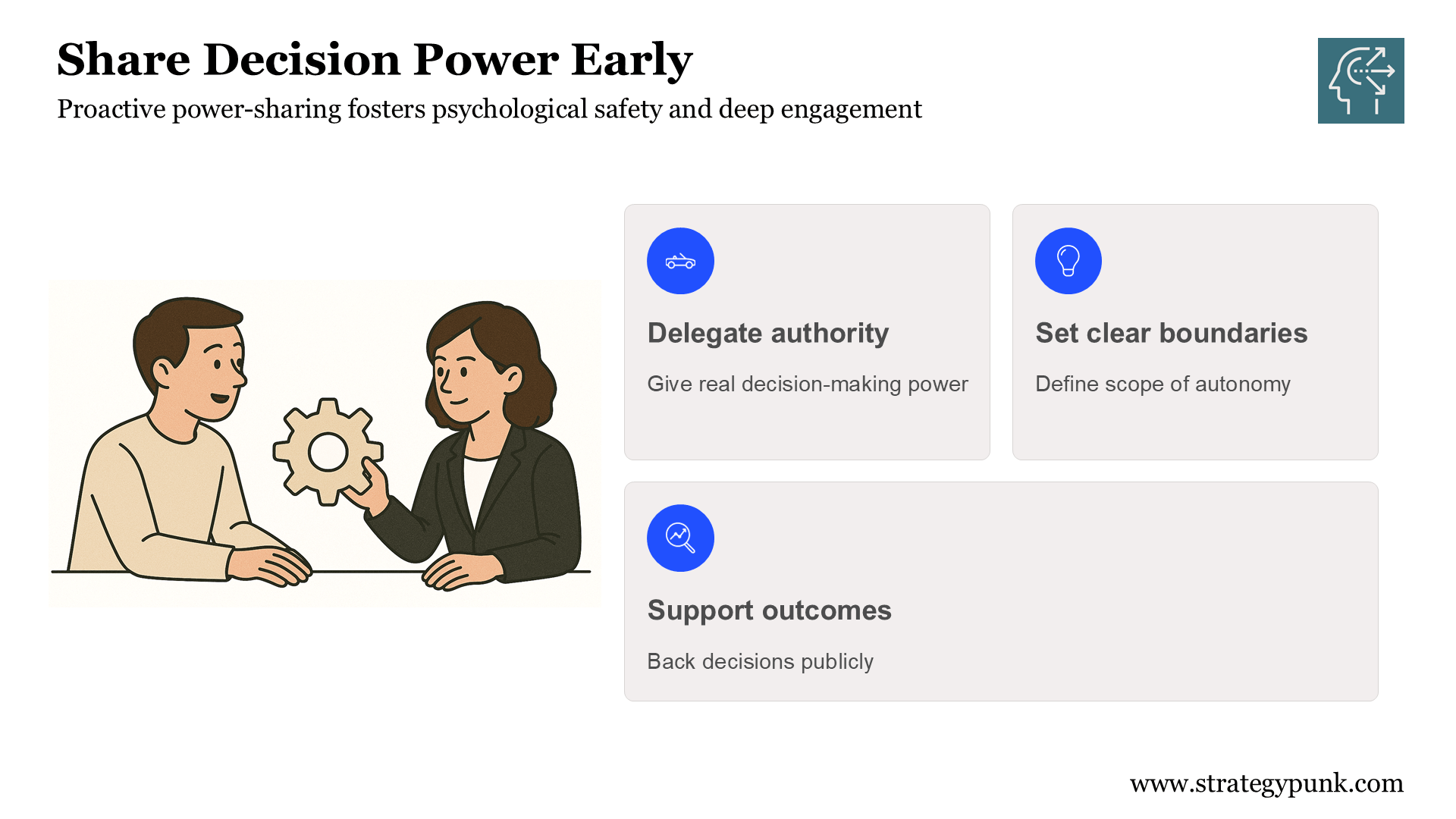
Don't wait for people to prove themselves. Give them ownership from the start. Let them make decisions in their domain. Tell them what success looks like, then step back and let them take the lead.
Identify three decisions you make regularly. Pick ones that someone on your team could own. Hand them over this week. Explain the context and constraints. Then trust their judgment. When they ask for your input, first ask what they think. People who have real authority engage differently from people who follow orders.
Recognize Effort and Learning, Not Just Results and Perfection
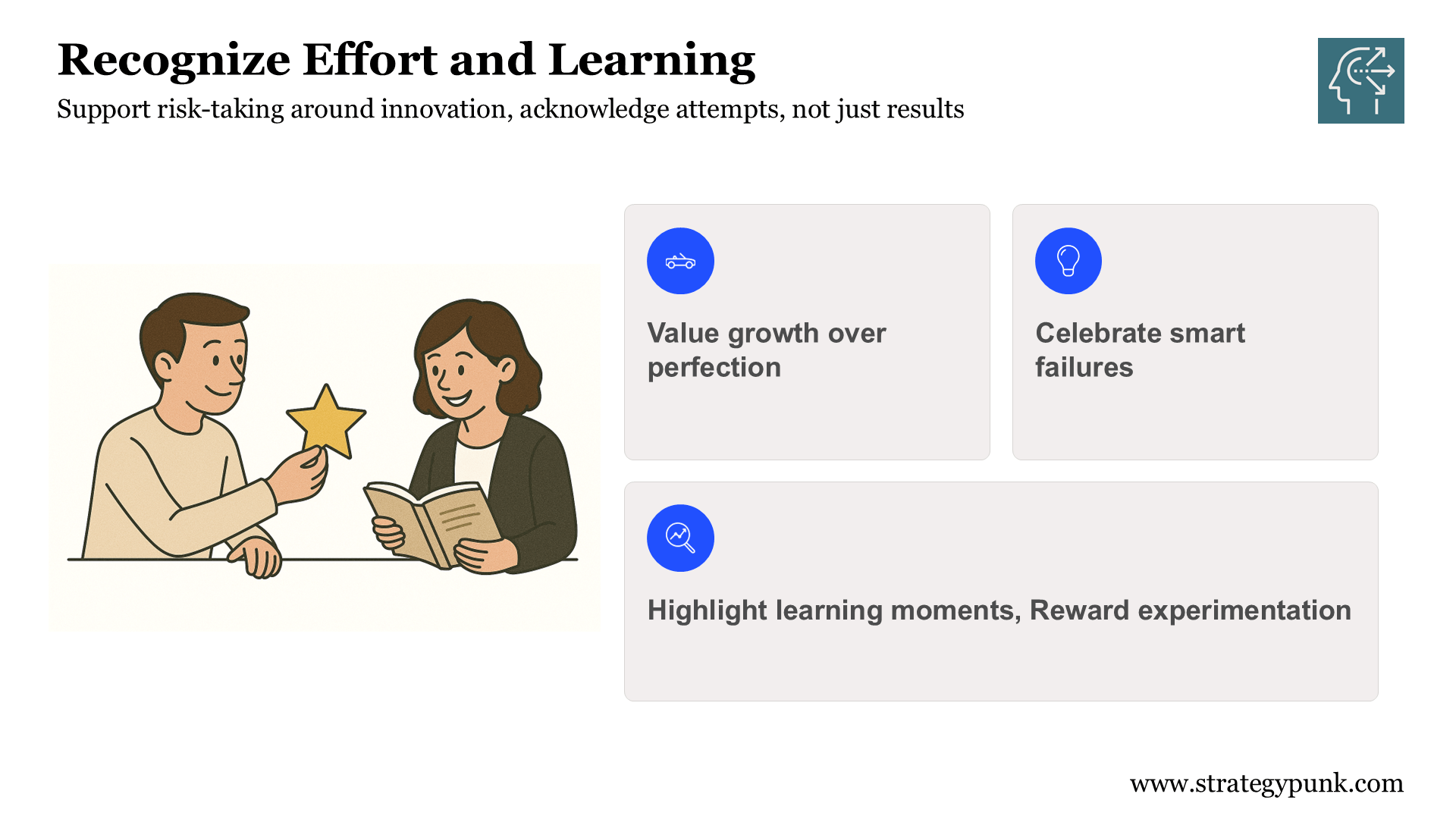
When someone tries something new and fails, celebrate what they learned. When someone puts in extra effort on a challenging problem, acknowledge it before asking about results.
In your one-on-ones, ask "What did you learn this week?" before you ask about deliverables. Notice when people stretch beyond their comfort zone. Say something specific about what you saw. This fosters a culture where people thrive, rather than hiding. Teams that value learning adapt faster when markets shift.



